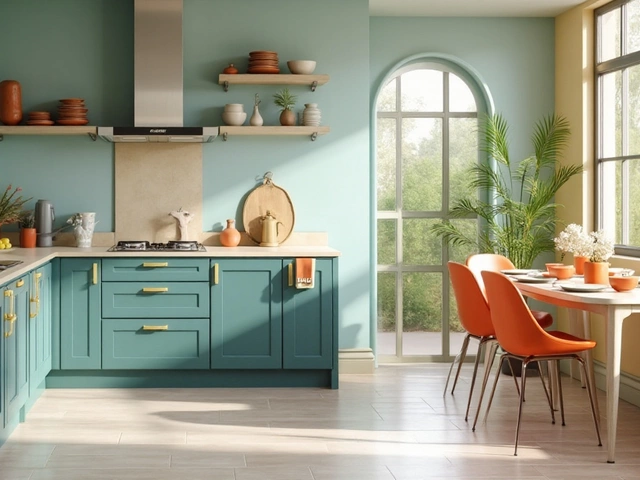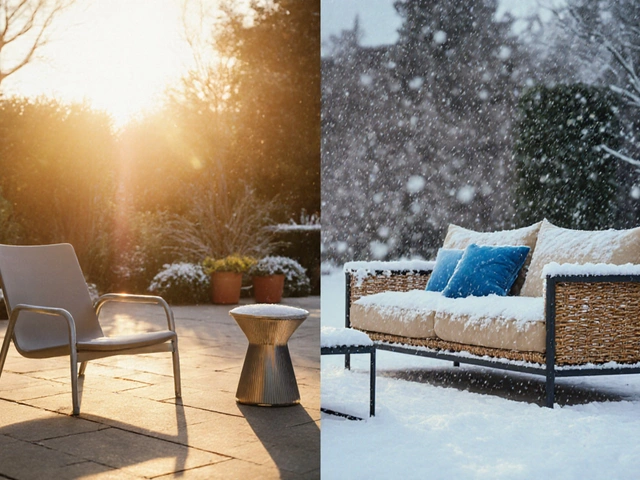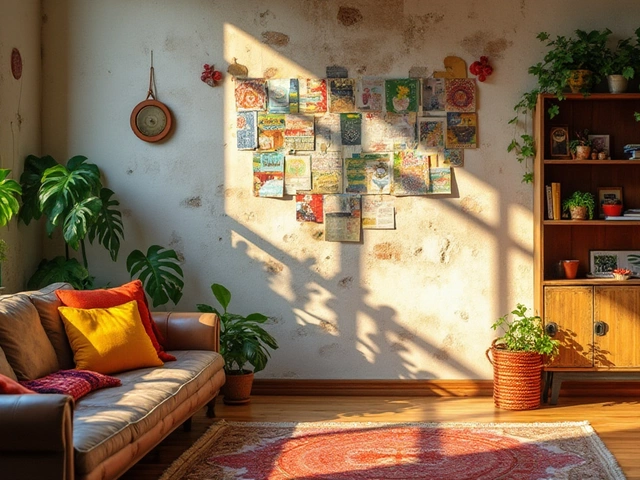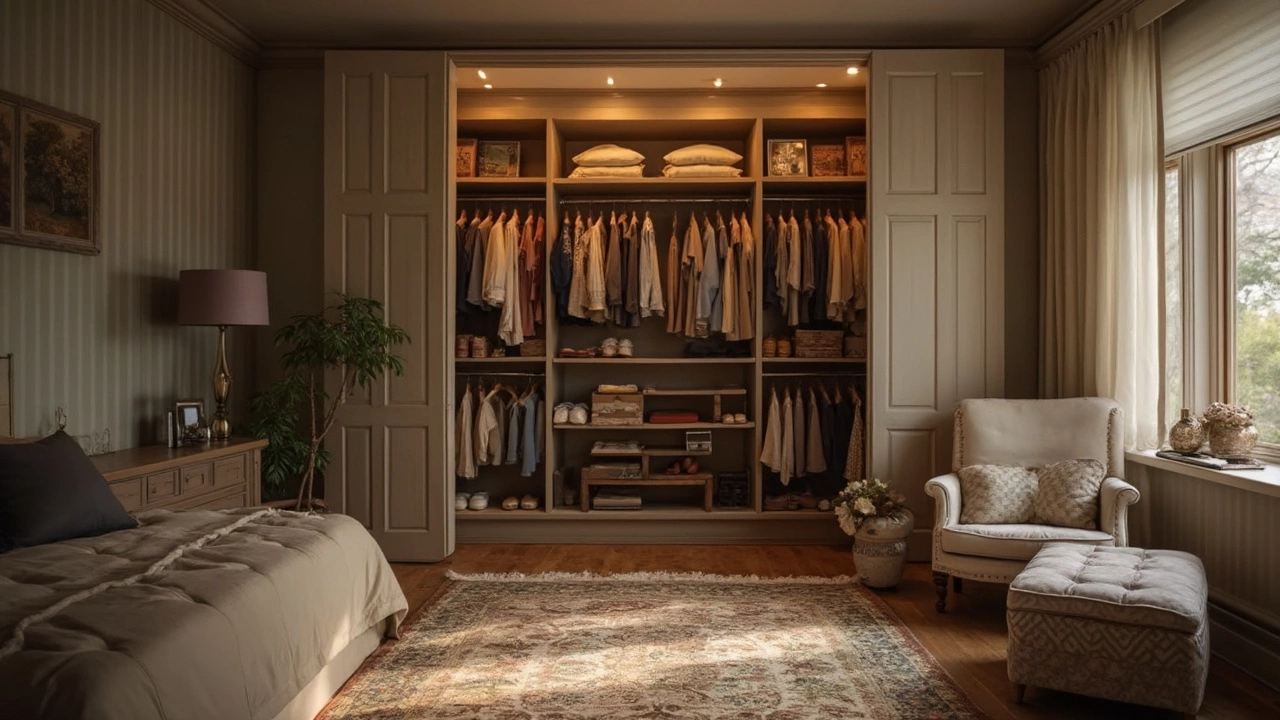
When you hear the word 'wardrobe,' many folks around the world might picture a grand, freestanding piece of furniture with ornate doors. In America, though, you'd more likely come across the term 'closet' when talking about storage for clothes. This has a lot to do with the architectural style of American homes, which often include built-in storage spaces rather than separate pieces of furniture.
The distinction isn't just semantic; it's rooted in history and culture. While older European homes often feature beautifully crafted wardrobes that make a statement in any room, American homes rely on practicality, with closets tucked neatly into walls, maximizing floor space. This shift isn't just about utility but also a cultural difference in how space is used and perceived.
So, if you're organizing your bedroom or thinking of a home renovation, understanding this can be super helpful in planning your storage solutions. Whether you call it a wardrobe or a closet, making space for your belongings in a way that suits your lifestyle is what matters most. In a world where Marie Kondo has everyone asking what sparks joy, knowing how to make the most of your storage space becomes even more important.
- The Origins of the American Closet
- Wardrobe vs. Closet: Cultural Differences
- Organizational Tips for Your Space
- Creative Storage Solutions
The Origins of the American Closet
Have you ever wondered why American homes favor built-in storage like closets over the traditional standalone wardrobes seen in Europe? Let's dive into a bit of history to unravel this choice.
Back in the early 1900s, American architecture began leaning towards efficiency and practicality. Post-World War II housing booms led to suburban developments where homes were designed for growing families. Built-in closets became default, making use of otherwise wasted wall space and providing more room within the living areas. This was also the time when the American dream home was becoming synonymous with a sense of open, airy spaces.
Unlike in Europe, where homes were older and smaller, needing freestanding wardrobes to compensate for limited built-in storage, American builders had more leeway in planning roomy homes, allowing closets to become a fixed feature. Built-in closets proved to be more affordable and convenient for storing the ever-expanding wardrobe of consumer-driven America.
The Rise of Walk-In Closets
Another interesting evolution in the States has been the rise of the walk-in closet. With the emphasis on space, many modern American homes now feature expansive walk-in closets, turning storage into a personal sanctum. According to a 2024 national survey, around 60% of new homes in the U.S. now include walk-in closets as standard.
These spaces go beyond just storing clothes—they function as private dressing areas that often include mirrors, lighting, and seating. A consumer's shift toward more versatile, open-concept living has firmly cemented the closet in American household design.
| Year | % of Homes with Built-In Closets |
|---|---|
| 1950 | 40% |
| 1970 | 70% |
| 2024 | 97% |
Understanding the origins of the American closet helps us appreciate the cultural and practical influences that shape our everyday spaces. If you're ever renovating or buying a home, think about what kind of storage solution fits your needs best—modern built-in closet or a classic wardrobe.
Wardrobe vs. Closet: Cultural Differences
When it comes to clothing storage, what folks in the U.S. call a closet is quite different from the European idea of a wardrobe. This difference is partly because of how homes are built and the spaces available in them. In many American homes, closets are built-in features, often included in the design of bedrooms, hallways, and even entryways.
The historical aspect is fascinating. In early American history, homes were smaller and had fewer built-in storage options, which led to the term 'closet' becoming popular for any small space used for storage. Over time, home designs evolved, and built-in closets became the norm by the mid-20th century. The U.S. census data from 1940 showed that by then, 90% of new homes included a built-in closet in every bedroom, reflecting this shift.
A cool tidbit comes from architecture expert Sarah Susanka, who remarked:
"The definition and use of closets in American homes revolutionized the way people organized their belongings and had a significant impact on furniture design. This marked a departure from the ornate, freestanding wardrobes found in older European homes."
The Modern American Closet
Today's American closets can be as simple as a small space with a door or as fancy as walk-in wonderlands with all sorts of shelving and organization. This variety lets folks customize their storage solutions to fit their specific needs, whether they’ve got heaps of clothing or just the essentials. Interestingly, according to a 2022 survey by the National Association of Home Builders, 45% of Americans consider walk-in closets a must-have feature when buying a home.
The European Wardrobe
On the flip side, many European homes still favor the traditional wardrobe, which brings a touch of elegance and flexibility. These freestanding pieces can be moved easily if you decide to redecorate or relocate. Plus, they're often passed down through generations, becoming family heirlooms, something Americans might find less common with their modern built-in closets.
So, whether you're team wardrobe or team closet, knowing these distinctions helps appreciate the functional and cultural nuances in how people around the world store their clothes.
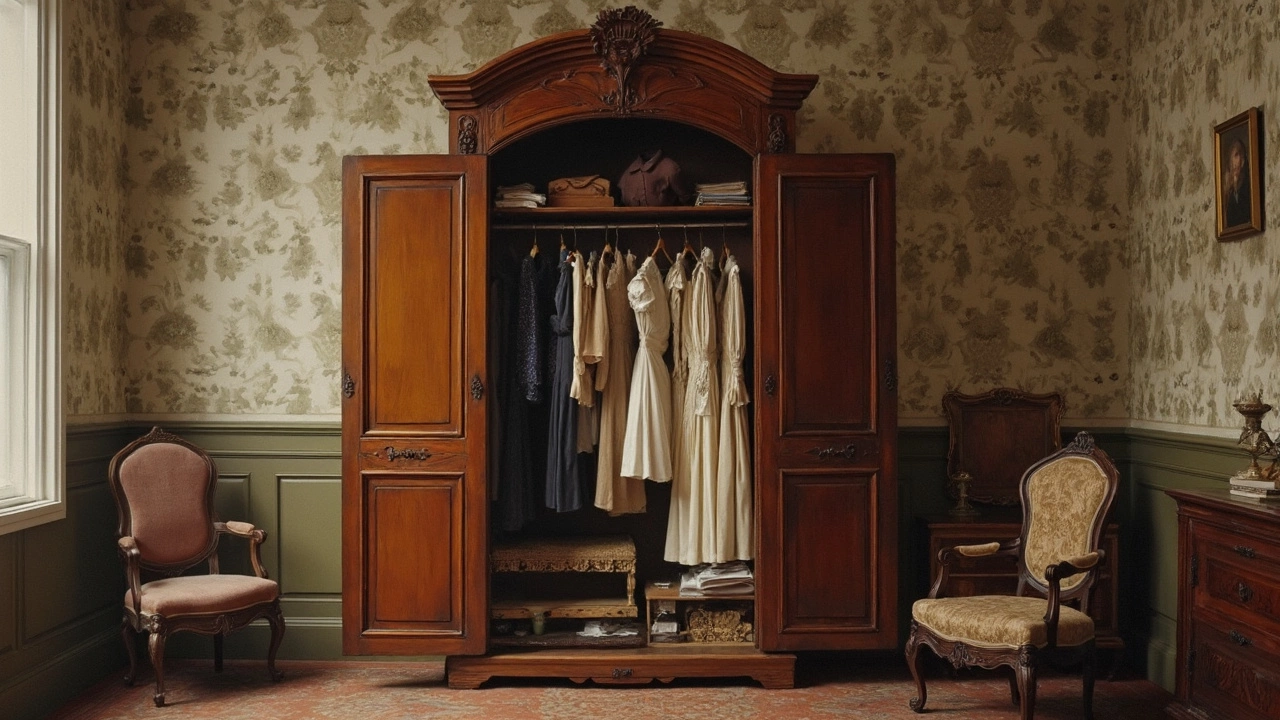
Organizational Tips for Your Space
Let's face it, whether it's a walmartbed or a small walk-in closet, keeping it tidy can sometimes feel like a Herculean task. But with a few smart strategies, you can keep everything neat and accessible, no matter your space's size or style.
Maximize Vertical Space
One of the most valuable tricks is to think upwards. Utilizing every inch of vertical space can significantly enhance your storage capacity. Add an extra rod above your current one to double your hanging space or use high shelves for items you don't use regularly.
Divide and Conquer
Breaking your closet into zones can help maintain order. Consider having specific areas for different categories, like work clothes, casual attire, and special occasion pieces. When each item has a designated spot, finding what you need becomes easier and faster.
Hang 'Em Right
Invest in quality hangers that preserve the shape of your clothes. Slim, non-slip hangers save space and keep things tidy. Make sure to hang items by category or even by color for an instant aesthetic upgrade.
Think Outside the (Shoe) Box
Shoes can easily clutter a space, and they're surprisingly picky about their storage conditions. Use over-the-door shoe organizers or dedicate a lower shelf just for shoes. If you're a sneakerhead or have an enviable heel collection, clear boxes let you showcase them while staying organized.
The Folding Game
Not everything needs a hanger. Some items, like sweaters and jeans, are better kept folded to save space. Consider using drawer dividers to keep these items neatly stacked and easy to grab.
Label Everything
Labels aren't just for the pantry. Clear tags on boxes and bins help you identify contents at a glance, saving time and potential frustration. It's all about creating a system that works for you.
Following these organizational tips will help you transform your closet or wardrobe into a space that feels as good as it looks. It's about making daily life a little easier, one organized step at a time.
Creative Storage Solutions
Maximizing space in your closet can be a game-changer, and it doesn't have to be expensive or complicated. Here are some ways you can turn chaos into a professionally organized setup without breaking the bank.
Double Up with Hanging Rods
One of the simplest ways to expand your closet is by adding another hanging rod. This instantly gives you more room for shorter clothes like shirts and skirts. You could have one rod for tops and another for bottoms, balancing out the length and avoiding overstuffing.
Shelve It Smart
If you have high ceilings, consider installing additional shelves above your existing rods. This space is perfect for storing seasonal items you won't need for another half a year. For an even tidier look, use storage bins with labels so you can track what’s where.
Think Vertically
Vertical storage isn't just about shelves. Hooks and wall mounts can make a big difference. They’re great for hats, belts, and scarves, turning even the sides of your closet into valuable real estate. Plus, using clear over-the-door organizers can keep shoes neatly tucked away.
Boxes Are Your Friends
Consider using uniform boxes to store items on your shelves. Having the same shape and size keeps things visually neat and can help free your mind from clutter too. Divide smaller items with drawer dividers, which you can find online or even DIY with some cardboard.
Lighting is Key
Adding some LED strip lights can make your wardrobe feel like a boutique, plus you’ll finally see what’s hiding in the corners. Most LED solutions are budget-friendly and don’t require rewiring.
On a practical note, did you know that organizing experts say that the key to a well-ordered wardrobe isn't just in the setup but maintaining it daily? Spend just five minutes a day adjusting hangers and returning items after use, and you'll avoid the dreaded weekend clean-up.

